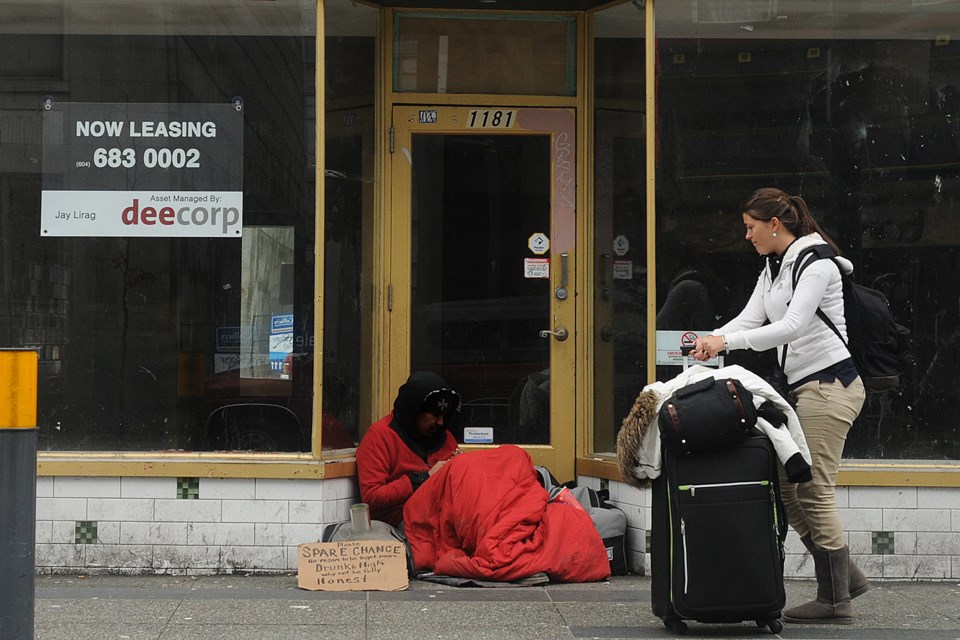Mayor Gregor Robertson expects to see a decrease in the city’s homeless population this year now that more permanent and temporary housing has opened to accommodate people who were living on the street and in shelters.
Robertson made the assessment Wednesday morning after participating for two hours in Metro Vancouver’s homeless count. The mayor spent his shift in the West End, where he said he did not find any homeless people.
“I expect the numbers to be down from last year based on all the housing and shelter investment — and hopefully that’s the case,” Robertson told reporters outside a homeless count headquarters near Nelson and Burrard streets.
The Metro Vancouver count is done every three years. Although Vancouver participates, it also does its own counts in the years between the Metro count. Last year’s city count in March recorded 1,600 homeless people, with 1,327 in shelters and 273 on the street.
Since the count, the city opened the 95-room former Biltmore hotel and 57 rooms at a former Ramada on East Hastings. The city also purchased another Ramada hotel on Kingsway, which is expected to open this week to accommodate tenants from the Old Continental at the north end of the Granville Street bridge. Renovations to Taylor Manor on Boundary Road are also underway.
In addition, nine of 14 social housing buildings to be built under an agreement involving the provincial government, the city and the Streetohome Foundation are now open. The remaining five buildings are expected to be completed this year. Altogether, the 14 buildings have more than 1,500 housing units.
Once all the housing opens, Robertson said he expected the homeless population to drop by “hundreds” of people. When Robertson was elected mayor in November 2008, he set a goal to end street homelessness by 2015.
The number of homeless on the street has dropped from 811 in 2008 to 273 last year, although that number has remained steady since 2010. The mayor said Wednesday he expected to reach his goal as long as “we have full commitment from our partners, from the B.C. government in particular.”
“We’ve seen the numbers come down dramatically over the past five years but we’ve got to follow through on this and make sure everyone has an option to get off the street,” he said, noting more shelters may need to open next winter.
A shelter on Central Street near Main and Terminal had a waiting list of 16 people Tuesday night, according to Susan Tatoosh, executive director of the Aboriginal Friendship Centre Society, which operates the shelter.
Tatoosh said 92 men and eight women stayed at the shelter Tuesday night. Though shelter staff found housing for 40 people at the old Ramada on Hastings at Cassiar, Tatoosh said a worrisome trend is the increase in homeless seniors.
“There are many reasons for that,” she said, pointing to high rents and the lack of affordable housing as factors.
The city’s 2013 homeless count found 73 per cent of people were male and the largest group was 35 to 54 years old. Three out of every five people surveyed reported an addiction and 46 per cent said they had a mental illness.
The majority of the homeless were found in the Downtown Eastside and the northeast side of the city. City council was to review this week a $1-billion, 30-year plan to revitalize the Downtown Eastside that calls for 4,400 new social housing units.
Meanwhile, the city announced Wednesday it appointed Carnegie Centre director Ethel Whitty as director of services for the homeless. It’s a new position created as part of the restructuring of the city’s housing department since Judy Graves, the city’s longtime advocate for the homeless, retired last year.



